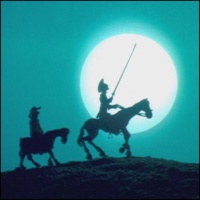
- MAIN MENU
- Home
- History
- Spanish schools
- Spanish in Europe
- Salamanca
- Malaga
- Barcelona
- Santander
- Spanish in USA
- Los Angeles
- Miami
- San Diego
- Spanish in Philippines
- Manila
- Quezon City
- Bacolod
- Spanish in Brazil
- Brazilia
- Rio de Janeiro
- São Paolo City
- Latin America
- Santiago de Chile
- Buenos Aires
- Lima
- Spanish in Asia
- Tokyo
- Jerusalem
- Ankara
 In 1713, the Real Academia Española was founded. It established authoritative criteria for the sanctioning of neologisms and the incorporation of international words. Spanish grammar was formalized during this period and there was a great flourish in Hispanic literature, helped by the expressive freedom allowed both writers and speakers by Spanish's relatively free word order, creating a variety of diverse literary styles.
In 1713, the Real Academia Española was founded. It established authoritative criteria for the sanctioning of neologisms and the incorporation of international words. Spanish grammar was formalized during this period and there was a great flourish in Hispanic literature, helped by the expressive freedom allowed both writers and speakers by Spanish's relatively free word order, creating a variety of diverse literary styles.
Meanwhile the Catholic Church decided to preach to the natives in selected local languages like Guaraní, Quechua and Aymará in the Americas, and Tagalog in the Philippines, rather than Spanish, inorder to make conversions easier, but first of all to distingush the religious mission they had from the direct influence of the non-missionary Spaniards, who were considered brutal and pitiless.
However for what concerns the Castillian language, in the Americas its usage was continued by the descendants of the Spaniards, by the so called Spanish criollos (Spanish creoles people) and by the Spanish-Amerindian (mestizos) majority. After the wars of independence fought by these colonies in the 19th century, the new ruling elites extended their Spanish to the whole population to strengthen national unity.
In the Philippines, the development of the Spanish language did not find place as in America for several reasons. It was isolated as the only Spanish colony in Asia, far away from all other Spain's colonies. Moreover, rather than being a direct colony of Spain, the Philippines was in fact a colony of another Spanish colony, New Spain, and was administered from Mexico City. Then in comparison to its counterparts in Spanish America, the Philippine population was, and still is, almost exclusively native.Following the Spanish-American War the small number of Spaniards present in the country returned to New Spain (Mexico) and Spain. Ultimately, at the culmination of the Philippine-American War many of the already minuscule Mestizo population was decimated as consequence of the war. English was then declared an official language. Spanish finally ceased to be an official language of the Philippines in 1973. A creole language called Chavacano developed as a lingua franca in the south when the Spaniards built forts to combat the Muslims and imported workers from all over the country. Chavaco and English, as well as Chavaco and Spanish weren’t and aren’t intellegible.
Unlike the Philippines, and because of the proximity to all other colonies, when Puerto Rico became a possession of the United States as consequence of the same Spanish-American War, their population was almost entirely of Spanish and mixed Spanish. There kept on co-existing both Spanish and English that were declared co-official languages.
In the 20th century, Spanish was introduced in Equatorial Guinea and Western Sahara and parts of the United States, such as Spanish Harlem in New York City that had not been part of the Spanish Empire.
In the Marianas (Micronesia), the Spanish language was retained until the Pacific War.
In the Iberian peninsula the twentieth century has seen further alterations in how Spanish is used by its speakers. The eruption of neologisms, fuelled by technological and scientific advances, as well as the linguistic influences coming from all other Spanish speakers in the world are to be noticed .
Coming back to our times, it is important to remember, however, that in Spain there are quite big differences in the spoken language depending on the region you are in, above all for what pronunciation and lexical characteristics are concerned. However, the maintenance of a unified, standard, version of the Spanish language and of its written form is guaranteed by the Real Academia de la Lengua Española. The Academia sets the rules to follow in order to speak and write in a way that is accepted by all the different Spanish speakers.
Today, the Spanish language is extended across the globe. It is the second most important of the world's languages and the third most spoken, after Mandarin Chinese and English with 400 million native speakers.
Copyright © 2006-2023 Spanish-in-the-World.net


